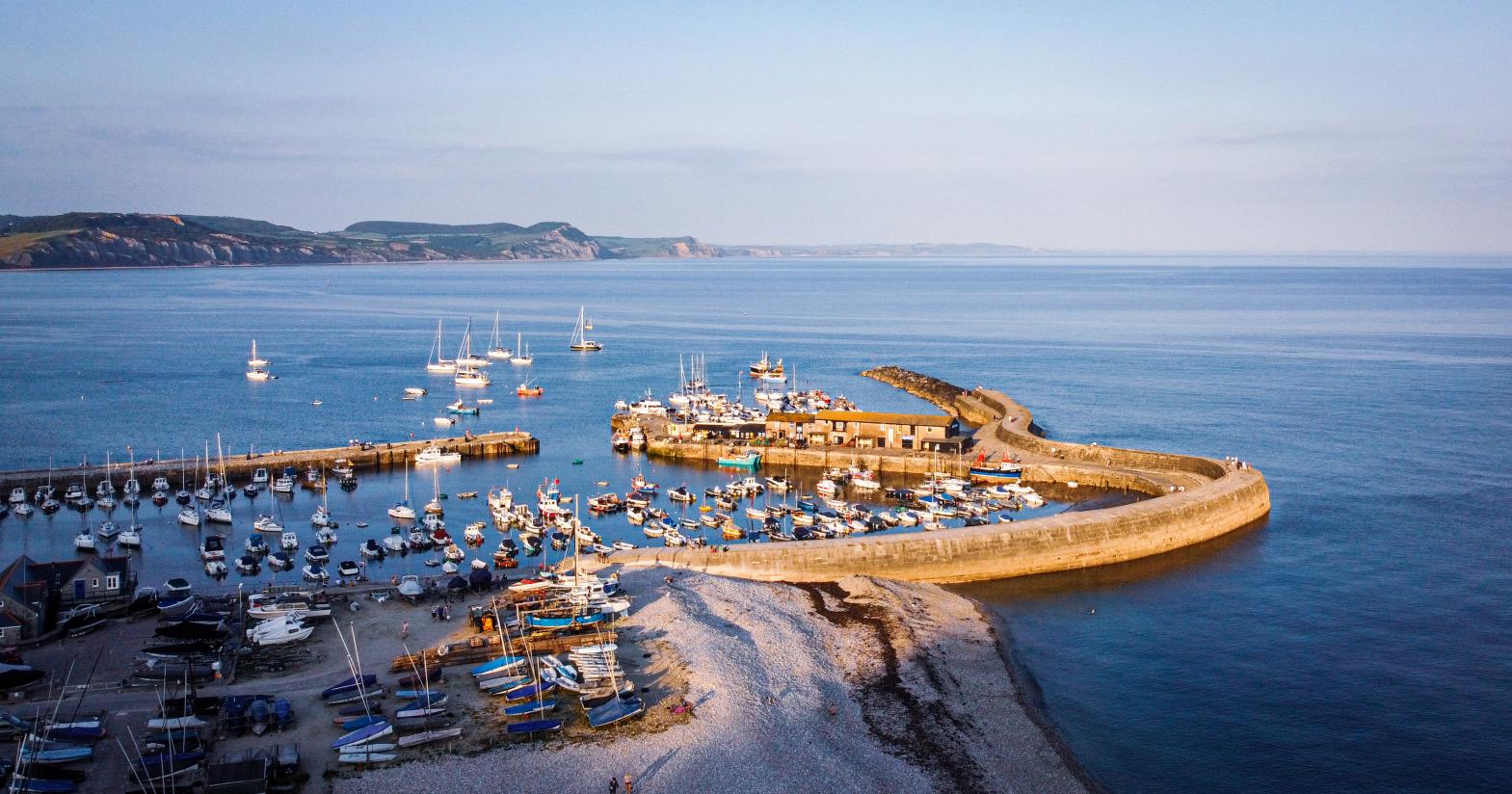The Cobb

Lyme Regis harbour is located on the west side of the town and includes the iconic 'Cobb', an internationally famous stone-built breakwater and jetty. The grade I listed structure which curves out south-eastwards into the sea has been of great economic importance to the town, preventing coastal erosion and providing a safe harbour to facilitate trade. The Cobb enabled Lyme to develop as both a major port and a centre of shipbuilding from the 13th century onwards.
The first written mention of the Cobb is in a 1328 document describing it as having been damaged by storms. Originally constructed from oak piles driven into the seabed and infilled with boulders, the Cobb has been destroyed or severely damaged by storms several times. It was swept away in 1377 which led to the destruction of 50 boats and 80 houses.
Until the middle of the eighteenth century the Cobb was cut off from the land at high tide. The onshore wave action replenished the protective shingle banks on the easterly beaches and naturally dredged the sand from the harbour floor. Many attempts were made to join the Cobb to the shore, but these structures were soon washed away, and it was not until 1857 that a more robust connection was finally established.
Much of what we see of the Cobb today was constructed in the late eighteenth and nineteenth centuries using massive blocks of Portland stone. The southern section, extending beyond the enclosed harbour dates from the 1790s; the High Wall was constructed in 1819-1820 and further strengthened following damage from heavy storms in 1824; the Victoria Pier and North Wall date from the 1840s and the causeway beneath the High Wall and alongside the harbour from the 1850s.
The harbour seems tiny by modern standards, but it made Lyme Regis a major port, the second largest in Dorset in the 14th century. By Elizabethan times Lyme ships were sailing all over the known world - to Africa, the Mediterranean and the Americas. In 1677 Customs receipts remained greater than those at Liverpool. But the Cobb eventually became too shallow for larger ships and declined from 1700 on. It still saw several hundred ships a year in the early 19th century, and coastal trade did not end until 1914. Shipbuilding was significant between 1780 and 1785 when nearly 100 ships were launched.
The origins of the name are obscure and over the years several theories have been advanced concerning the meaning of the word Cobb. Historian George Roberts, whose history of Lyme was first published in 1823, suggested the structure 'derives its name from the cobble stone of which it is composed'. It has also been argued that the origin of the name is derived from the Scandinavian word kobbe, meaning a rounded stony island.
The magnificent Cobb is an attraction for visitors not just for its visual beauty and architecture, but also for its literary connections. The Cobb is the place where Louisa Musgrove fell from steps known locally as “Granny’s Teeth”, in Jane Austen’s 1818 novel “Persuasion” and the unforgettable opening scene involving Jeremy Irons and Meryl Streep from the 1981 oscar-winning cinematic blockbuster, The French Lieutenant's Woman, was filmed on the Cobb.
There are said to be several hidden carvings on The Cobb; numbers and a compass. About forty five yards from the gin shop steps the numbers 1826 are roughly carved on the surface of the high wall and can be interpreted either as a date or a compass bearing. Further along the high wall is a carefully hidden Ж mark which is either a mason's mark or grafitti. There have been suggestions that this is a carving of a compass rose, but this seems unlikely particularly as it has no E-W cross bar and the upright bar is 56˚W of true North. There is also a stone roughly marked IE near the northern steps together with another stone marked IE 1785 near the tip of the Southern Arm. We have yet to find these!
The Cobb is perfect to stroll along while providing a fantastic vantage point to take in the splendid panoramic views along the Jurassic coast. It’s a great place to watch the sun go down during the winter months as it sets over the sea to the west and is a draw when the sea is rough with waves crashing against the magnificient structure.